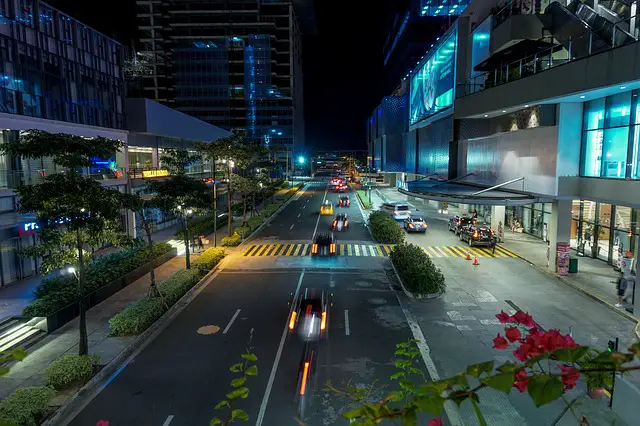According to Colliers, developers should actively engage in discussions with the government and other stakeholders regarding policies and programs that are likely to redefine the property market over the next 12 months further.
These include: looking for opportunities to capture demand from foreign retailers in light of the lower capital requirements for international retailers; capitalize on opportunities for transit-oriented development in urban areas Metro Manila, following the infrastructure development.
Table of Contents
Office
Rental Market: 5.5%
Vacancy: 6.2%
Supply: 1 million sq m
Colliers projects a new supply of about 1.0 million sq meters (10.8 million sq feet) and a net take-up of 960,000 sq meters (10.3 million sq feet) in 2020. Colliers projects vacancy to reach 6.2%, with rents growing by about 5.5% by the end of 2020.

Residential
Colliers projects the delivery of about 15,610 units in 2020, outpacing the annual completion of 10,700 units from 2016 to 2018, a period that benefited from the trickle-down impact of offshore gaming demand.

Retail
Colliers expects the completion of about 310,000 sq meters (3.3 million sq feet) of new retail space in 2020. Due to the substantial new supply, Colliers sees vacancy rising to about 12%, with lease rates rising at a slower pace of 1.0% from 1.3% in 2019.
Hotel
Colliers expects the completion of about 3,300 rooms in 2020. The increase in hotel supply is likely to be absorbed by the sustained growth in foreign arrivals and should bring occupancy rates to about 70% in 2020.
1. Diverse Office Demand
Colliers believes that Metro Manila office’s demand drivers are likely to remain diversified in 2020. Before the entry of Philippine Offshore Gaming Operators (POGOs), outsourcing firms such as call centers and shared service providers easily accounted for more than 50% of all office leasing deals.
Colliers has observed that the demand base started to diversify in Q4 2016, and Colliers sees this trend continuing over the next 12 months. Traditional occupiers (includes companies in various sectors including legal, engineering and construction, government agencies and flexible workspace operators), business process outsourcing (BPO), knowledge process outsourcing (KPO) firms (such as health information management and software engineering firms), and POGOs are likely to dominate Metro Manila office space take-up in 2020. Colliers sees sustained demand from these four major demand segments in 2020.
Meanwhile, Colliers encourages landlords to help outsourcing tenants identify viable alternative sites outside Manila, particularly with the national government’s push to expand outsourcing operations in second and third-tier cities. POGO firms have also started to occupy space outside Metro Manila, and landlords should offer leasing options in cities that accommodate POGO operations such as Cebu, Laguna, and Clark in Pampanga.
In the office segment, among the headwinds that Colliers sees over the next three years are:
- Slower GDP growth (multilateral lending firms such as the Asian Development Bank (ADB) and foreign banks) are now projecting a 6.0% growth from the previous 6.2%. A slower domestic economy is likely to slow down the expansion of traditional and non-outsourcing tenants;
- Outsourcing firms (call centers and shared service firms) taking a wait-and-see stance due to uncertainty over the government’s tax reform proposal which intends to reduce tax perks that these firms currently enjoy; and
- Lingering concerns on the sustainability of offshore gaming firms in Metro Manila.
Colliers recommends that developers consider these factors as they prepare for their pipeline beyond 2022.
2. Residential Market Driven By Traffic Crisis
The construction and rehabilitation of railways and expressways across Metro Manila has resulted in fierce traffic jams across the capital’s major roads. The train lines, highways, and subways that are currently being built or rehabilitated won’t be completed until 2022 to 2025, further aggravating traffic in major business districts in Metro Manila, such as Makati CBD, Ortigas Center, Fort Bonifacio, and the Bay Area.
This has compelled developers to build co-living residential projects near key business hubs that primarily cater to young professionals who want to live near their places of work but cannot afford to buy or lease out condominium units within the major CBDs. In 2020, Colliers sees developers continuously exploring opportunities amidst the traffic crisis by building co-living projects that cater to employees of major hubs such as Makati CBD, Bay Area, and Fort Bonifacio.
In terms of pre-selling condominium projects, Colliers sees sustained demand from investors and local and foreign employees with the Bay Area, Quezon City, Ortigas Center, and its fringe area dominating take-up across the country’s capital. Colliers sees developers cashing in on demand by relentlessly building residential projects in Metro Manila in 2020.
Over the next 12 months, Colliers projects the delivery of about 15,610 units in the capital region, outpacing the annual completion of 7,700 units annually in 2012 and 2014 and even higher than the 10,700 units delivered from 2016 to 2018, a period that already benefitted from the trickle-down impact of offshore gaming demand.
Metro Manila’s condominium stock should expand to 152,000 units by the end of 2021, a 28% rise from about 118,900 in 2018. Colliers sees Fort Bonifacio and the Bay Area covering more than 80% of new supply from 2019 to 2021. In our opinion, the pace of residential completion continues to move in step with the expansion of business activities in these business districts.
3. More Innovative Strategies In Filling Retail Vacancies
Colliers sees the culmination of about 1 million sq meters (10.8 million sq feet) of new leasable retail supply over the next three years. In our opinion, mall operators should continue to implement innovative leasing strategies and attract attractive tenants to fill a substantial amount of new retail space. Despite the completion of additional malls in 2020, Colliers sees vacancy peaking at only 12%, up only slightly from our projected 11% in 2019, as Colliers expects increased absorption of retail space during the period.
Vacancy should decline back to about 11% by the end of 2021, given the take-up from new tenants and a slightly muted retail space completion metro-wide. In our opinion, retail space absorption over the next 12 to 24 months should be supported by the end of office and residential towers near malls located within major townships across Metro Manila. Aside from sustained demand from local consumers, retail sales should also be buoyed by the continued expansion of offshore gaming firms in Metro Manila
Colliers has also seen the re-emergence and refurbishment of food courts in Metro Manila’s malls. This started with Century City Mall’s Hole in the Wall in 2014 and Powerplant Mall’s The Grid in 2018. Some of these are farmer’s market-themed fresh produce as well as curated local and foreign food and beverage (F&B) brands. Colliers believes that these food courts have incorporated unique themes and modern designs, creating a stand-alone destination within the mall.
Over the next twelve months, Colliers expects a more pronounced refurbishment of food courts in malls across Metro Manila.
Over the next 12 months, Colliers believes that a significant opportunity for Metro Manila mall developers is the housing of flexible workspaces. Colliers has observed that flexible workspace operators are continuously looking for space across Metro Manila. But with office vacancies hovering between 0.5% and 1.0% in prime locations such as Makati CBD and the Bay Area, these operators have been scrambling to find suitable space.
4. Chinese To Drive Hotel Occupancy And Spending
In our opinion, a key contributor to rising hotel occupancy and tourist spending in the country is the rising number of Chinese arrivals. Colliers believes that rising disposable incomes, relaxed visa rules, and aggressive promotions of low-cost flights are encouraging more tourists to travel outside of Mainland China.
The latest data from the Department of Tourism (DOT) show that tourist arrivals reached 6.8 million for the first ten months of 2019, up 15% from the 5.9 million visitors in the same period in 2018. South Koreans are still the country’s largest tourist market, with 1.6 million visitors, followed by Chinese with 1.5 million visitors. While total foreign visitors grew by 10% per year from 2016 to 2018, Chinese tourists increased by about 37% per year during the same period. Over the next twelve months, we still see Chinese tourists driving the hospitality sector and contributing to higher hotel occupancy and spending in Metro Manila and other key destinations across the country.
From 2020 to 2022, Colliers expects the completion of about 7,800 rooms or 2,600 rooms annually. Annual new supply is likely to peak in 2020, followed by a gradual decline from 2021 to 2022. Colliers still projects a 70% occupancy from 2020 to 2022 as the continued rise in foreign tourists should sustain occupancy despite the delivery of new hotel rooms.
This growth should be supported by the tourism department’s aggressive international marketing programs and the government’s efforts to expand and modernize airports nationwide. In our opinion, developers should build more three- and four-star hotels as they cater to the country’s major tourist groups such as Chinese, Japanese, and Koreans. Colliers believes that Quezon City remains a viable location due to the lack of quality accommodation in the area.
Colliers encourages developers to follow the government’s airport development and redevelopment plans carefully. Among the available locations for more accommodations due to the ongoing airport, projects are Clark in Pampanga, as well as in Cavite, Bulacan, and Davao.
